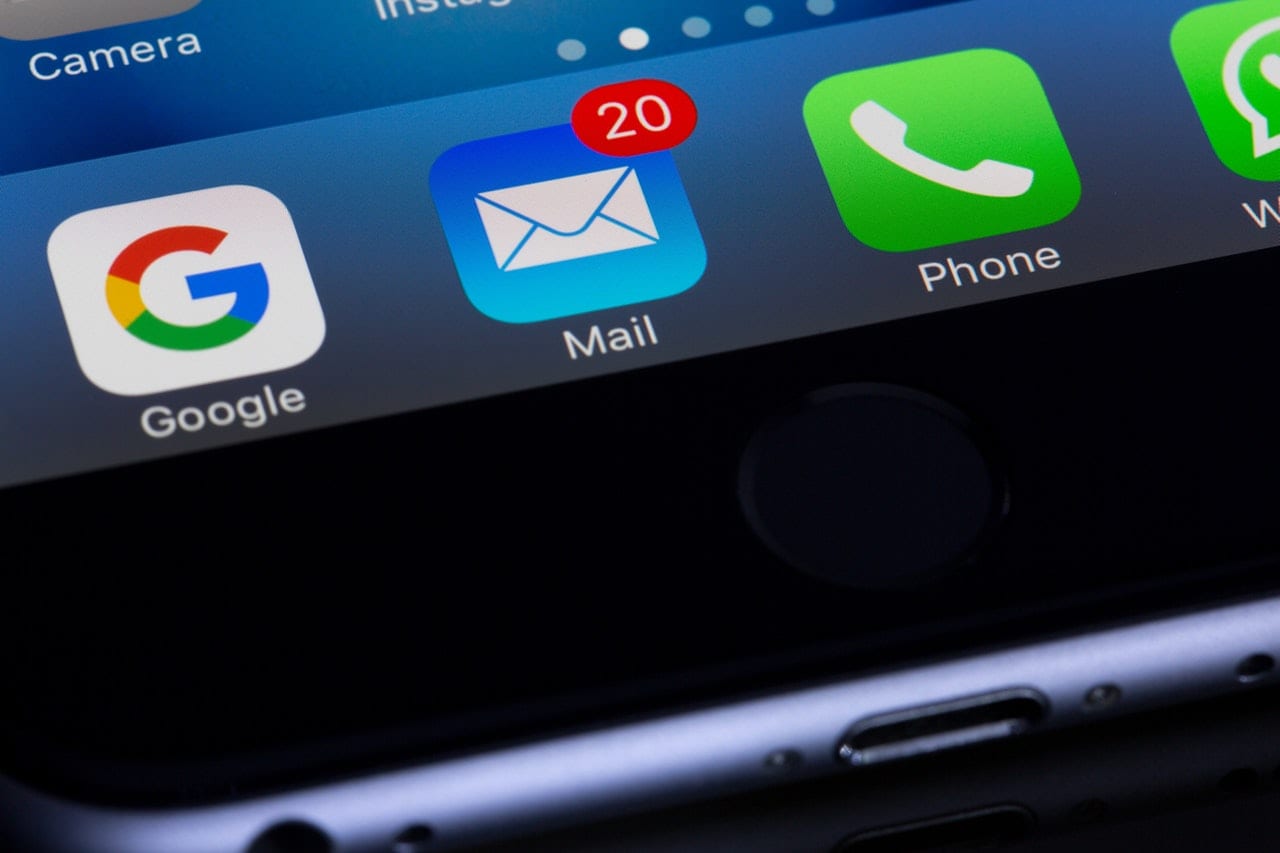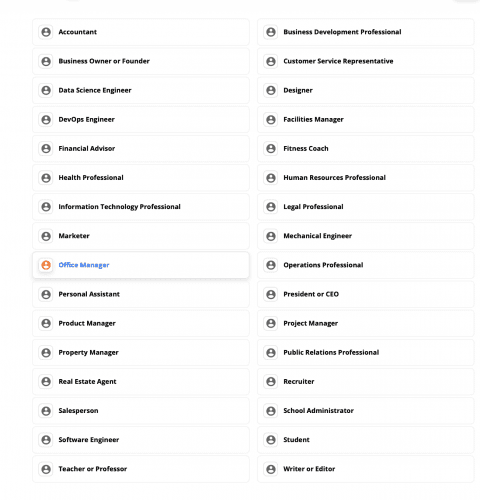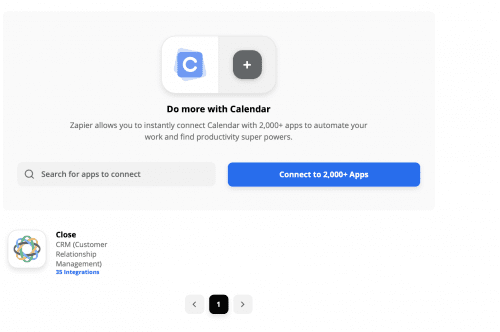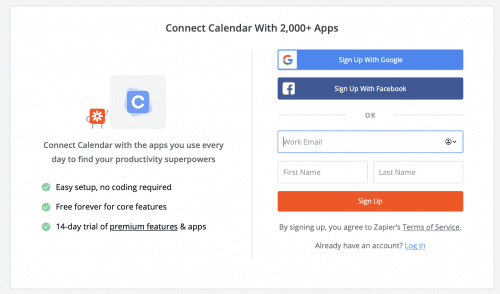If you want to be the boss, then you need to start acting, thinking, and becoming the boss. Guess what? That takes more than a title or corner office. It’s about being a role model, as well as someone dependable and trustworthy. And, that starts with being as productive as possible.
Becoming the boss is not possible without proper time management.
Here are 101 tips that will help every leader master their time management skills so that they can become the most productive boss ever.
1. Plan your itinerary.
Wait. Isn’t this supposed to be about productivity and not travel tips? You’re right. But, like traveling, time management involves a lot of planning.
You need to know how you’re getting to your destination, what to pack, and the dates that you’ll be gone. You also need to consider lodging and what you plan on doing. I mean, there’s a vast difference between speaking at an industry event in Chicago during January and sitting on a beach in the Caribbean.
Before doing anything else, plan your productivity itinerary by:
- Establishing realistic goals.
- Identifying the steps you need to get to get you there.
- Setting clear expectations.
- Knowing your priorities and when they need to get done.
- Anticipating possible roadblocks
- Surrounding yourself with the right tools and resources.
2. Stop saying that there isn’t enough time.
Eliminate this phrase from your vocabulary.
“Running out of time is mostly a euphemism, and the smart analyst realizes that it’s a message about something else,” Seth Godin wrote on his blog. “Time is finite, but, unlike money, time is also replenished every second.”
“The people you’re trying to reach are always recalibrating which meetings they go to, which shows they watch, which books they don’t read,” wrote Seth. “The solution has nothing to do with giving people more time (you can’t) and everything to do with creating more urgency, more of an itch, more desire.”
3. Establish a consistent morning routine.
What do Jeff Bezos, Richard Branson, Elon Musk, and Oprah Winfrey all have in common? Sure. They’re all super successful. But, they also all have a consistent morning routine.
You don’t have to follow their exact morning rituals. But, you should create one that encourages you to have a more productive day. For example, waking-up 30-minutes earlier so that you’re not rushing out the door. You can even use this extra time to squeeze in a workout and eat a nutritious breakfast. It’s a simple yet effective, way to start the day on the right foot while giving you the energy to remain productive throughout the day.
4. Do your heavy lifting in the morning.
You that the one thing that needs to get done today? Or, how about the task that you’re dreading the most? Knock it out first thing in the morning. The reason? We usually have the most focus and energy in the AM. Plus, it builds momentum for the rest of the day. And, best of all, it won’t be hanging over your head for the remainder of the day.
5. Manage your attention, not your schedule.
Chris Bailey, the author of Hyperfocus: How to Be More Productive in a World of Distraction, has found that managing time isn’t a problem. It’s managing our attention.
According to Baily, this is because of distractions — which aren’t our fault. The key is to take back control of these interruptions. Instead of letting minor disturbances, like email notifications, accumulate, we should focus more on things that are productive and meaningful.
“We get more done, dive deeper into our experiences, and notice more meaning around us because we process the world with greater intention,” he writes. “We stop allowing our devices to interrupt us every 40 seconds. And we feel more in control of our lives because we take control of each moment.”
6. Get organized.
The time wasted looking for a misplaced item could have been spent completing a task. Tidy up your workspace and keep it organized. That means whenever you’re done using something, put it back where it belongs.
I’d also set aside a time, like on a Friday afternoon, to do more of your heavy cleaning.
7. Recognize multitasking traps.
Stop multitasking! It’s not only impossible, but it’s also a colossal time-waster. Mainly, this is because you are dividing your attention between tasks. The better option is to focus on one thing at a time.
8. Work the hours that are best for you.
Unless you’re under the control of a Sith overlord, you can set your own schedule. Use this to your advantage by working on high priority and challenging tasks when you’re most productive.
Additionally, create a schedule that can help you avoid distractions and achieve work-life balance. For example, consider going into work as soon as your kids are off school. The office will be quiet enough for you not to get distracted. And, you can even leave early so that you can spend time with your kids.
9. Play to your strengths.
Don’t waste your time on activities where you’re not knowledgeable or experienced. It would take you twice as long, if not more, than if an expert handled them. Just stay within your wheelhouse.
10. Follow the 52:17 rule.
Research from DeskTime has found that the most productive people work for 52-minutes and then take a 17-minute break.
11. Chunk up your week.
“I like to chunk up my workweek into similar tasks on the same day because it makes me much more productive,” says Shark Tank’s Barbara Corcoran.
“As past behavior is usually the best predictor of future behavior, I find it helpful to sit down each year with my previous year’s calendar in hand. I try to identify repetitive work patterns to help me anticipate work and chunk up my tasks more effectively.”
12. Pursue activities that benefit you personally and professionally.
“Align your professional and personal goals for maximum efficiency.” – Chris Guillebeau
Let’s say that you’ve always wanted to learn a new language. But, instead of just learning any language, why not invest the time in becoming fluent in a language that can benefit you professionally? For example, if you have a speaking gig or plan to expand business in Portugal, then it learning Portuguese would be a good use of your time.
13. Keep a diary or journal.
If you haven’t done so yet, invest a diary or journal. Trust me; it will be money well spent as you can use it to track your time, jot down reminders, and write what you’re grateful for.
14. Focus on outcomes.
To-do-lists and a rigid schedule can come in handy. Both, after all, ensure that you don’t forget about anything of importance. But, they can also stifle creativity.
What does that have to do with productivity? Well, creativity increases neuropathways. In turn, this allows you to “adapt to new situations leading to new ideas, new thoughts, and yes, new solutions.”
15. Solicit feedback.
The thought of receiving feedback can make some of us cringe. In reality, it’s one of the best ways to learn, grow, and improve.
For example, maybe the person-in-charge of your executive calendar notices that you spend way too much time in meetings. If you asked them how you could improve your time management,m then they may suggest to cut back on these types of meetings.
16. Implement the two-minute rule.
Apply “Getting Things Done” author David Allen’s “Two-Minute Rule” to your menial tasks, like responding to emails. If it takes less then two minutes, do it so that it’s out of the way. If not, these small tasks will accumulate and become an overwhelming and time-draining chore.
17. Know when your plate is too full.
Be real with how much you can accomplish in a specific time. If you’re already working at full capacity and your calendar is booked solid for the next month, then don’t accept any more work or meeting invites.
18. Break-up with your bad habits.
Not all breaks-up are bad. Case in point, those that are unhealthy and toxic. I’m talking about neglecting your health, procrastinating, and allowing yourself to get distracted. Eliminate them from your life and embrace healthy habits that will enhance your energy and productivity.
19. Trust “The Process.”
I wish I were talking about the 76ers here. But, it’s a philosophy used by Nick Saban — who just so happens to be one of the greatest coaches in college football history.
He doesn’t have his players focus on winning the championship. Instead, he encourages them to: “Think about what you needed to do in this drill, on this play, in this moment. That’s the process: Let’s think about what we can do today, the task at hand.”
20. Keep a “no thanks” list.
Developed by LinkedIn Influencer Beth Kanter, a “No Thanks” Journal is where you note the situations where you declined a time request.
“Writing it down and reflecting on it regularly not only gave me the words to say “no” nicely to future situations but also helped me push the pause button,” explains Kanter. “This pausing helped me understand situations and patterns where I should change my initial yes to a no.”
21. Download a calendar app.
Calendars, as our very own Angela Ruth points out, are vital to your productivity. “Without your calendar, you’ll have a difficult time remembering your appointments, meetings, events, deadlines, and employee schedules.”
Thankfully, there is no shortage of fantastic calendar apps out there — there are even some great ones pre-installed on your phone. The key is to find a calendar that meets your exact requirements. At the minimum, it should be customizable, shareable, and accessible on the devices you use.
22. Put first things first.
“Putting first things first means organizing and executing around your most important priorities,” Stephen Covey famously wrote. “It is living and being driven by the principles you value most, not by the agendas and forces surrounding you.”
In other words, book your priorities before something else of less importance takes over that slot.
23. Respect thy calendar.
Speaking of your calendar, when you have something penciled in, follow through with it. For example, if there’s a meeting or conference call at 3 p.m., don’t blow it off because you would instead go for a run. Keep the appointment and go for your run afterward.
Respecting your calendar keeps you on track. And, it ensures that you don’t fall behind on your priorities.
24. Ditch your to-do-lists.
Here’s the problem with to-do-lists. They don’t take into account how much time you need to complete a task. As a consequence, you end-up over-or-underestimating how long something will take you.
A better choice would be time-boxing. Time-boxing is where you block out a specific amount of time for a particular task. Not only will it allocate the right amount of time on the right task, but it will also encourage you to remain focused on the task at hand. It also creates a record of what you’ve achieved and can help fight back against Parkinson’s Law.
25. Don’t let your calendar control you.
“Calendar management is the single most important thing, especially as you get busy and have more responsibilities,” says Mary Callahan Erdoes to CNBC. Erdoes is the CEO of JPMorgan Asset Management.
“You have to be maniacally focused on owning your calendar. You must have the lists of what you need from other people and what other people need from you. What are the short-term issues that need to be dealt with? What are the long-term concerns?
“Unless you can stay on top of that religiously, it will end up owning you. That’s not the way to go about staying organized and being on top of things.”
26. Set a time limit on tasks.
You don’t want to give yourself too much, or too little, time here. But, if you know that you only have 30-minutes to get something done, then you’re going to hustle to make sure you beat the clock. Best of all, you don’t even need to use a timer. Just set a reminder directly from your calendar.
27. Keep your calendar updated in real-time.
Did you make a doctor’s appointment? Did a meeting get canceled? If so, update these changes to your calendar immediately. It’s a surefire way to avoid conflicts or wasting your valuable time.
28. Make sure calendar entries catch your eye.
You wake up in the morning and skim your calendar. It appears to be the same routine. But, you completely overlooked something important, like a phone call at 11 a.m. The reason? The entry didn’t stand out.
For notable entries, make sure that they pop. You can do this by giving them a unique title or using title colors or fonts. Now when you glance at your calendar, you won’t miss these essential entries.
29. Keep your calendar clutter-free.
There’s a belief that you should schedule your entire day. I can see the appeal. If you book your calendar in advance, then it won’t get filled up with less critical objectives. At the same time, you don’t want your calendar to be so rigid that there’s no flexibility. Even worse, you don’t want to pack your schedule with nonsense.
The fix? Don’t clutter your calendar with items like standing meetings or those without a purpose. Other things would be minute or automatic tasks, like brushing your teeth, and entries that no longer fit in your schedule.
30. Speak, don’t type.
Just like dictating instructions to an assistant or employee, use your voice to add new calendar entries. Whether if it’s Siri, Google Assistant, Cora, or Alexa, learn common voice commands to reduce the time spent typing.
31. Learn how to prioritize your time.
If you want to become the most productive boss ever, then you need to learn how to prioritize your time. There are a lot of ways to do this. So, I recommend that you read How Do You Prioritize Your Time? 25 Tips for Optimal Time Prioritization for some killer tips.
Personally, though, I’m a big fan of the priority matrix, such as the famous Eisenhower Matrix.
32. Reprioritize throughout the day.
Even if you’ve prioritized your time, things will pop up throughout the day. As opposed to jumping into these headfirst, make sure that either tied to your goals or are critical. If not, either assign them to someone else or schedule them for later.
33. Put the ‘open door policy’ on hold.
I’m a firm believer that the boss should be accessible when needed. That’s why I’m all for open-door policies. But, they can also be disruptive.
When you need to hit the grindstone, close your office door. It may help to share your calendar or place a “Do Not Disturb” sign on your door too.
34. Block apps at certain times.
Do you get anxiety just by the thought of being separated by your phone? If so, you may want to block distracting apps when you don’t want to be disturbed. Now your phone can be by your side without you getting interrupted.
35. Find a hideaway.
As I kid, I built a treehouse deep in the woods. When I needed some alone time, I would retreat there for some peace and quiet.
I may not have a treehouse these days. But, I do have hideaways when I want to work without being distracted. It could be an empty boardroom, unused office, or even a coffee shop.
36. Don’t be afraid to say “no” — also if you’ve already said “yes.”
Stuff happens. So, if your priorities have changed, don’t be afraid to say “no” to time requests — even if you’ve previously accepted. Please be respectful, though, and give the other party a head’s up in advance.
37. Master the art of delegation.
I’ve mentioned this several times already. But, you don’t have the time, energy, or skills to do everything. Identify the best person for the job and hand over these responsibilities to them. It’s a simple way to free up your schedule and keep you focused on your priorities.
38. Automate the repetitive.
Do you know all of those tedious and recurring tasks? You know, paying bills, cross-posting on social media, or meeting reminders. They don’t take long to do. But, when put together, they can be a serious time drain. That’s why you should find tools to automate these tasks for you.
39. Leave on a jet plane.
Not literally — unless you’re in desperate need of a vacation or have to travel for business. Instead, take an airplane day.
Credit goes to Bryan Hassin for this genius hack, who noticed how productive he was during an intercontinental flight. “No Internet access, no distractions, just churning through high priority to-do items,” he wrote. By the end of his flight, he has emptied his inbox. Hassin’s also “completed some “creative” tasks like drafting presentations.
To schedule your own airplane days, review your calendar and pick a day or two to go off the grid. I would just let others know that you’ll be unavailable these days by sharing your calendar with them. You’ll be shocked at how much you’ll accomplish when you’re not always interrupted.
40. Reduce decision fatigue.
We only have so much mental energy. So, why waste it on the trivial?
You can reserve your mental energy by having a go-to-outfit, preparing your meals for the week, and getting your team involved in the decision-making process.
41. Don’t pull yourself out of the game.
Did you ever have one of those days when you’re in the zone? It wasn’t planned. You’re ready to rumble and conquer your top priorities? Well, take advantage of that. If you have the energy and focus to work for 12 hours, then go for it.
On the flip side, when you need to take a break, don’t force yourself to stay in the game. It’s like a dehydrated athlete. They need to remove themselves from the game to get some fluids and rest.
42. If you’re not making progress, move on to something else.
Let’s say that you wanted to write a blog post. You have writer’s block, which has resulted in your starring at the screen for over 20-minutes. At this point, cut your losses. Instead of wasting any more time, move onto something else, and circle back when you’re ready to write.
43. Block out time to review your email.
Recently, I asked a colleague if they received an email that wasn’t necessary. The message was a message from Spotify highlighting the year in music. They said they hadn’t received the message because their inbox was a “mess” with hundreds of unread messages.
Don’t let your inbox get away from you. It will eventually become a daunting and time-consuming chore. That’s why you should block-out specific times throughout the day to keep your inbox in-check without distracting you. I do this three times; in the morning before work, after lunch, and before leaving work for the day.
44. Add labels and categories to your inbox.
Here’s the problem with checking your inbox. It’s easy to get sucked into it. What I mean is that you plan to spend just five-minutes checking your messages and then realize it’s been over 20.
An easy way to avoid this would be to add labels and categories. It’s similar to the 4Ds. If a message is essential and will only take a minute to respond, just do it. For urgent messages that require more in-depth responses, reply when you have more time. Important messages needed for reference can be archived. And, anything that’s not relevant should be trashed.
45. Unsubscribe from unwanted newsletters and promotions.
Stop filling your inbox with garbage. Go through and unsubscribe from any unwanted or outdated newsletters and promotions.
46. Monitor your app usage.
Do you know how much time you spend on your phone? If not, I suggest using an app like RescueTime, or go into your Settings and look at your digital wellbeing. When you realize how much time you’re glued to your screen, you can begin to take steps to curb your usage.
47. Turn on greyscale.
Originally designed as an accessibility feature for users with vision impairment, this will turn your screen, well, grey. That will lead to a dull experience when viewing pics on Instagram. And that’s not fun.
48. Delete distracting apps from your phone.
A long time ago, I deleted my social media apps off my phone. And, to my surprise, my productivity went through the roof. No longer was I getting distracted from social media notifications. Or, getting tempted to view my accounts.
Now, when I need to update my accounts, I have to log in from my computer.
49. Stop using your phone as an alarm clock.
Yeah. It’s convenient. But what do you do when you grab your phone to turn off the alarm? You still going through your emails, newsfeeds, social accounts, etc. Instead of getting out of bed to start your day, you end up lying there glued to your phone, wasting precious time.
50. Find an alternative to meetings.
Let’s not sugarcoat this. Meetings suck. Overall, they’re an unproductive waste of time. So, when possible, skip the meeting altogether by using an alternative like a quick email or phone call.
51. Send out an agenda in advance.
What if a meeting is necessary? Make sure that you create and send out an agenda in advance so that everyone can prepare. It will ensure that the meeting starts and ends on time.
Also, make it a rule never to accept a meeting invite unless you’ve received an agenda.
52. Invite fewer meeting attendees.
You know, too many cooks in the kitchen spoil the broth. The same is true with meetings. Too many participants will lead to an unproductive meeting were side conversations reign supreme. It’s best to invite fewer than eight people to keep the meeting focused.
53. Keep meetings short and concise.
You should also keep your meetings under 30-minutes. There’s no need to keep everyone from their work longer than needed. Besides, that’s around the amount of time that we stop paying attention and learning.
54. Schedule meetings on the right day and time.
How productive is a 9 a.m. meeting on Monday? Probably not very much. One study found that the ideal time was actually at 2:30 p.m. on Tuesday.
55. Stay away from rabbit roles.
“Every meeting tends stray off-topic,” writes Lolly Daskal. “If the subject begins to wander, quickly move back to the agenda.” As the leader, it’s your role “to intervene and bring the conversation back to the topic.”
56. Stand up and meet.
Andrew Knight and Markus Baer of Washington University conducted a study on stand-up meetings versus sit-down meetings. What did they find? Well, standing up during a meeting resulted in better collaboration. It also created more excitement regarding the creative process.
57. Ban electronics from the conference room.
Just like when you’re working, your smartphone is the main reason why you’re getting distracted during a meeting. And, it’s just not you. It’s all the participants.
The quick fix is to ban electronic devices from the meeting. Just ask everyone to leave them in their office. Or. have the participants place them in a basket.
58. Eliminate back-to-back meetings.
Add buffers into meetings. It’s a simple way to avoid running late. And, you can use this time to follow-up and prepare for the next event.
59. Set odd times.
As opposed to starting a meeting at 2:30, consider 2:29 or 3:32. It’s more memorable and so specific that attendees won’t arrive late.
60. Harness the power of AI.
We’re still working on this. But, tools like Calendar use machine learning to make smart suggestions on how to schedule meetings. Sooner then later, it will read the room and record the meeting to automatically take notes.
61. Implement company-wide “No Meetings Day.”
Meetings, as I’m sure you’ve already figured out, are a massive waste of time for you and your team. Tat’s why you should implement a company-wide “No Meetings Day.” For instance, on Wednesday, you make it a rule that absolutely no meetings take place. Now everyone can spend that day working on what’s truly important.
62. Organize your work and week around energy levels.
It’s no secret that productivity is linked to your energy levels. That’s why you’ve heard a million times — “eat the frog” in the morning. The reasoning is that’s when you have the most energy. But, there’s more to it than that.
We also have our own ultradian rhythms, where we can only focus for 60-90 minutes. Afterward, we need to take a break for 30-minutes or so to meditate or walk.
Not only that, each day has a different energy level. Mondays usually suck because you’re coming off the weekend. By Friday, you’re spent. With that in mind, Tuesday and Wednesday are when you’re at peak productivity.
63. Don’t be negligent.
I’m sure that you’re acquainted with the 4Ds of time management. But, what about the 4Ds of negligence?
Granted, this is used in the medical industry. But, it’s also applicable for bosses.
- Duty. You have a responsibility to follow through with your obligations.
- Dereliction. Emergencies and the unexpected happen. But, the key is not to let them constantly distract you from your priorities. Also, if you’re not an expert, assign these new tasks to someone who is.
- Direct causation. If you don’t hold yourself accountable, there will be negative consequences.
- Damages. What was the cost of your poor management skills? Did you miss a deadline? Lose a client?
64. I’m here to kick ass and chew bubblegum.
I’m not just quoting They Live because it’s a cult classic. It’s been found that chewing gum can boost cognitive abilities and performance. It can also lower stress and even make you more charismatic.
65. Make life easier for you and your assistant.
I highly doubt that you’re not working with an assistant either in-house or virtually. They’re probably already handling your calendar and schedule for you. So, help them help you by letting them shadow you for a bit. Provide them with clear, step-by-step procedures and a list of everything you’ve delegated. And meet with them frequently to go over any changes regarding priorities or procedures.
66. Learn how to speed read.
How would you like to complete all of your required reading in 1/3 or 1/5 the time? That may sound too good to be true. But, it is possible to learn how to speed read. As a result, you’ll save time while continuing to grow and learn.
67. Foresee crisis.
I hate to be the bearer of bad news. But, things will not always go according to plan. So, get out your crystal ball to see what lies ahead. While you can’t foresee every emergency, try to have a plan for possible emergencies. For example, if you have to leave work, who will step-up in your place? If you had a social media hiccup, what is your crisis management plan?
68. Reconnect with your why.
Periodically, stop and make sure that your efforts are aligned with your goals. If not, they should either be put on the backburner, handed off to someone else, or scraped from your schedule.
69. Delay gratification.
“Our emotional brain has a hard time imagining the future, even though our logical brain sees the future consequences of our current actions,” says David Laibson at Harvard University. “Our emotional brain wants to max out the credit card, order dessert, and smoke a cigarette. Our logical brain knows we should save for retirement, go for a jog, and quit smoking.”
The trick is to strike a balance. For example, you and your team just closed a deal. Savor the moment by going and celebrating. But, don’t overdo by staying out until after midnight. You, and your productivity, are going to pay for it the next day.
70. Make quick calls on small and medium decisions.
As the boos, you’re expected to make hundreds of decisions per day. Here’s the thing, though. A majority of them honestly don’t matter. So, why waste your time and energy, focusing on these small and medium decisions?
In 10–10–10: A Life-Transforming Idea, Suzy Welch uses a simple decision-making system to help resolve this. Whenever you have to decide to make, ask yourself the following:
- How will I feel about this decision 10 minutes from now?
- How will I feel about it ten months from now?
- And in 10 years from now?
71. Work your body.
Are you surprised by this? After all, physical activity is probably the best thing that you could do for your well-being. One study even found that it can improve performance and time management.
Best of all? You don’t need to devote too much time to exercise? Moderate exercise (like going for a 30-minute walk) can help you reap these benefits.
72. Schedule “me” time.
All work and no play make Jack a dull boy.
Even though you have a million things to do, add self-care to your calendar. Do the things that you enjoy doing during downtime. And, don’t be afraid to have some alone time to process everything that’s going on.
73. Get enough sleep.
Don’t kid yourself. A lack of sleep will definitely kill your productivity. The reason? If you’re tired, then it’s just not possible to be at 100%. Make your sleep a priority by maintaining a consistent sleep cycle and establishing a relaxing evening schedule.
74. Don’t skip meals.
You need to eat to refuel. Eating the right meals and snacks can also boost your brainpower, improve your sleep, and keep you energetic throughout the day.
75. Remove the stigma around mental health.
Neglecting your mental health can influence your performance. It can also impact your physical health, which can cause absenteeism and serious long-term health concerns.
There’s nothing to be ashamed about here. Leaders have a lot on their minds — and a lot of stress and anxiety. And, sometimes they need to take a mental health day or speak with a trained professional to help them cope with these struggles.
76. Practice gratitude.
Studies show that gratitude can make us healthier and happier. Another study from the University of Pennsylvania found “that when managers expressed appreciation for the employee’s work, productivity went up significantly.”
77. Get rid of rotten eggs.
Whether if it’s a toxic relationship or chores you can’t stand, remove these from your life. Not only does this drag you down mentally, but it can also be a huge time drain.
78. It makes more sense to live in the present tense.
Instead of harping on the past, or worrying about the future, focus on the present. One way to do this? Practice mindfulness meditation. It can lower stress, enhance your focus, and strengthen tour relationships.
79. Laugh.
It’s true. Laughter can make you more productive. Mainly this is because it reduces stress, helps you re-charge, and boosts creativity. It can also foster a more positive work environment. Just don’t be like Micheal Scott and only tell appropriate jokes.
80. Stop fixing something that’s already broken.
I had a friend who kept repairing his second vehicle. He used it to go to work or run errands like going to the dump. However, he spent so much of his downtime trying to keep this truck on the road. He finally threw in the towel and bought a better vehicle.
It doesn’t matter if it’s a beat-up car, slow computer, or inefficient workflow. You can save a lot of time, energy, money, and heartache by stop trying to fix what’s broken.
81. Set team goals and priorities.
You can keep everyone on the same page, as well as give purpose to everyone’s work by establishing team goals and priorities. Even better, it guarantees that everyone is working on the right thing at the right time.
Remeber. If you help your team with their time management, it will help you with yours.
82. Help employees solve complex issues.
Is there an employee who is consistently missing deadlines. Besides holding everyone else up, it’s giving your company a bad name. Get to the bottom of the problem before it gets any worse.
83. Cultivate a culture of flexibility.
Both you and your employees should work when you’re most productive. You should also permit remote working a couple of days per week. And, avoid micromanaging them. These are simple ways to keep everyone happy and productive.
84. Play games.
Time management doesn’t have to be boring. It can even be a little fun. For example, you and your team could play a game like How Long Is a Minute or Circadian Rhythm to help everyone get a better grasp on time management. It also builds rapport within your business.
85. Improve your communication skills.
You’ve just delegated a task to someone else. You didn’t clearly explain your expectations, though. As a consequence, you weren’t satisfied with the final result. Now they have to go back and start from scratch, and you have this task hanging over your head.
If you had better communication skills, this could have been prevented. And, it wouldn’t have wasted everyone’s time.
86. Break large projects into more manageable pieces.
Imagine you’re climbing a mountain. It’s daunting and overwhelming at first. But, if you break your climb down into stages, it will seem a little more manageable.
When you and your team embark on a massive project, scale it down into bite-sized chunks so that it seems more achievable.
87. Don’t overburden your team.
Is your team already working at full capacity? Then don’t throw any more work their way. Besides making them more anxious and stressed, it will also prevent you from delegating some of your less important tasks to them.
88. Provide time management training.
You just hired a new employee. They fit in with your culture and are the best at what they do. But, their time management skills are lacking. As a result, it holds up everyone when working on a project together.
Either mentor them or suggest that they take a time management course so that this is no longer a concern for you or anyone else.
89. Establish time-off schedules for you and your team.
Both you and your team need time away from work. It keeps everyone within your organization fresh and energetic. Most importantly, it reduces stress and burnout. To ensure that this takes place, establish time-off policies like no email after hours, and encouraging breaks.
90. Be the dumbest person in the room.
“One of the best productivity hacks I’ve learned is to hire people who are better at specific things than I am,” wrote Joshua Conran on Inc.com. “I actively work to ensure I’m the dumbest person in the room.”
“As I do this, I become less needed on a day-to-day basis to complete projects, and the company’s talent accomplishes more than I ever could.”
91. Get peer pressure.
Believe it or not, research has found that peer pressure helps kids more than it hurts them. And, this is also true in adulthood.
Surrounding yourself with positive, supportive, and like-minded people encourage you to pick-up healthy habits. Consider joining professional organizations or working in a coworking space the next time you need a productivity boost.
92. The 5-second rule.
I’m a germaphobe. So, this is not about eating food after it’s been on the ground for five seconds. It’s a hack developed by Mel Robbins that can nudge you to take action.
Mel defines this as, “If you have an impulse to act on a goal, you must physically move within 5 seconds or your brain will kill the idea.”
93. Identify your procrastination triggers.
Despite your best intentions, procrastination happens to us all. Take note of what triggers your own procrastination. Maybe you start thinking that a task is tedious or difficult so that you can find a way to beat procrastination once and for all.
94. Close open loops.
Open loops are commitments you’ve made but haven’t been set in stone. Sure. If something more important pops up, these can be rescheduled. But, if we don’t close these, they linger in our minds. And they can even interfere with your productivity.
For instance, you ran into a colleague last week and agreed to lunch. You didn’t set an exact time, though. So, there you are working when you receive a text from this person saying that they’ll meet you at 12:30 p.m. If you had known this in advance, you would have had more flexibility in your schedule. Now your entire day is off-course.
If you didn’t agree on a specific time initially, then take the initiative and set up a time so that you can close this loop.
95. Maximize your time.
“I’m always trying to maximize my time,” says “Shark Tank” investor and FUBU founder Daymond John.
“For example, I’ll do my emails when I’m on a plane, instead of when I’m in the office. I try to have my team members handle as much of the meetings as possible. I’ll be involved in the last part, so I don’t have to sit through five separate meetings of the same purpose. When I have personal interaction, I try to maximize that as well.”
96. Kill two birds with one stone.
You’ve got a packed schedule. But, you need to discuss a project with an employee. At the same time, you’ve been copped up all day inside and would love to stretch your legs. Why not invite that employee to join you on your walk?
97. Create your ideal workplace.
Your work environment has a significant influence on productivity. With that in mind, create an optimized workplace that will encourage you to be more productive. Examples would be removing clutter from your desk, reducing background noise, and having ergonomic furniture. Also, make sure that you have appropriate lighting, set the temperature just right, and place plants around the office.
98. Almost was good enough.
Perfectionism can be crippling. Sometimes you need to accept that “good enough” will suffice.
Of course, this is easier said than done. But, here’s a strategy that may help. If you’re writing a book, then yeah. You want that to be as close to perfection as possible. But, that social media update or blog post. There’s no need to obsess over them being perfect.
99. Don’t break the chain.
Do you know how Jerry Seinfeld got so funny? He placed a large calendar on his wall and drew a red X on the days are wrote jokes. The idea was not to break the chain by building consistency and momentum.
100. Reflect at the end of the day.
Before drifting off to sleep, take a minute, and reflect on what you accomplished today. It’s a simple trick that will get you motivated. And, it also lets you identify what worked and what needs to be adjusted.
101. Plan your week on Sunday night.
Sundays are supposed to be a day of rest. But, you know, there is no rest for the weary.
Now, you don’t have to put in a full workday on your day off. But, you should sit down every Sunday night and map out your entire. It will guarantee that it will be the most effective and efficient week ever since you know exactly what needs to get done and by when.
Need some tips to get started? Here are eight ways to plan your week so that it will be productive.















